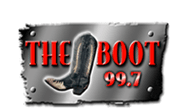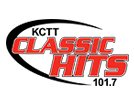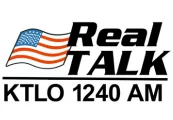media/00003_achimap18.22.jpg
LITTLE ROCK, Ark. — A record 226 Arkansas public school districts, or 97% of the state’s 234 contiguous school districts, have COVID-19 infection rates of 50 or more new known infections per 10,000 district residents over a 14-day period, the Arkansas Center for Health Improvement (ACHI) said Monday, citing its analysis of Arkansas Department of Health data current as of Saturday.
ACHI made a special update to the COVID-19 dashboard on its website Monday in response to the accelerated spread of the virus. ACHI also added a new color, pink, to the maps on the dashboard, available at achi.net/covid19, to signify an infection rate of 200 or more new known infections per 10,000 district residents over the past 14 days, or at least 2% of the district’s population. In some districts, more than 4% of residents in the local community are known to be infected.
In the face of the immediate threat posed by the explosion of the omicron variant across Arkansas communities, ACHI calls for the following short-term actions:
implementation of masking requirements for all staff and students in all schools across the state;
virtual instruction for schools in the purple and pink zones;
sheltering in place for seniors, families with unvaccinated children, and families with members who are immunocompromised or at risk because of health conditions such as heart disease, lung disease, diabetes or cancer; and
suspension of public interactions or implementation of virtual options where possible on the part of municipalities, businesses and houses of worship.
“Because of the highly infectious omicron variant, COVID-19 is raging uncontrolled across our state,” said ACHI President and CEO Dr. Joe Thompson. “Unfortunately, we need to endure some temporary disruptions in our daily lives so we can stop the virus’ spread.”
The previous record for school districts with 14-day COVID-19 infection rates of 50 or more new known infections per 10,000 district residents was 201, which was reached last January and again in August.
Of the 226 districts with 14-day infection rates of 50 or more new known infections per 10,000 residents, 61 districts have 50 to 99 new known infections per 10,000 residents (red on ACHIs map); 110 districts have 100 to 199 new known infections per 10,000 residents (purple); and 55 districts have 200 or more new known infections per 10,000 residents (pink).
As of Saturday, 226 school districts had infection rates of at least 50 new known infections per 10,000 district residents over the previous 14 days including the following in North Central Arkansas. An asterisk indicates that a district is new to the list this week.
o Bergman*
o Calico Rock rate of 100 or more new known infections per 10K residents
o Cotter*
o Deer-Mt. Judea* rate of 100 or more new known infections per 10K residents
o Flippin*
o Harrison* rate of 100 or more new known infections per 10K residents
o Izard County Consolidated rate of 100 or more new known infections per 10K residents
o Jasper
o Lead Hill*
o Mammoth Spring rate of 100 or more new known infections per 10K residents
o Melbourne rate of 200 or more new known infections per 10K residents
o Mountain Home
o Mountain View*
o Norfork*
o Omaha
o Ozark Mountain*
o Salem* rate of 100 or more new known infections per 10K residents
o Searcy County rate of 100 or more new known infections per 10K residents
o Valley Springs* rate of 100 or more new known infections per 10K residents
o Yellville-Summit*
The infection rates reported by ACHI are based on infections among community residents living within the geographical boundaries of each school district and not only on cases among school employees and students.
Known infections include confirmed and probable cases. Probable cases are based on verbal reporting and antigen test results, as identified by the Department of Health. Reported rates do not include results from at-home testing, thus the true level of infections is likely higher than that reported.
Infection rates and counts are not reported for districts with fewer than five reported infections to reduce the possibility of identifying individuals. School district counts do not include infections among incarcerated populations, in nursing homes, or in human development centers.
ACHI also updated the maps and tables on its website displaying vaccination rates by public school district, community, and ZIP code, using Department of Health data current as of Saturday. Twenty-three school districts have achieved vaccination rates of at least 50% of district residents, one of them over 60%: Bentonville, at 61%.
WebReadyTM Powered by WireReady® NSI










